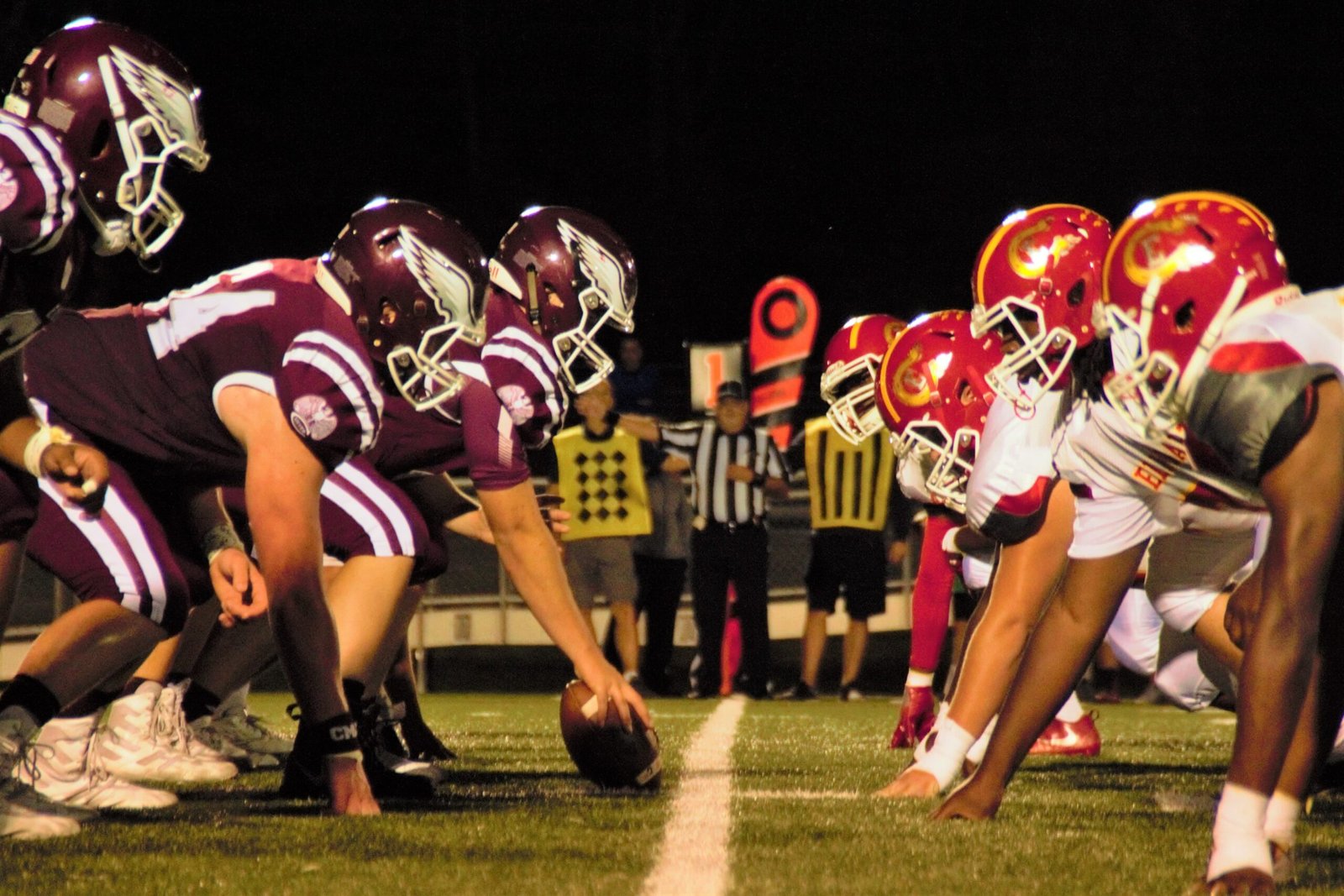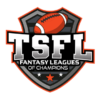1882 T-Formation League
Regular Season
| 1 | The Falcon Express | 5 | 3 | 1 | 0.611 | 1123.00 | 957.84 | T-1 |
|---|---|---|---|---|---|---|---|---|
| 2 | Tooth Fairy | 5 | 3 | 1 | 0.611 | 1073.12 | 1013.60 | T-1 |
| 3 | Scorpions | 5 | 3 | 1 | 0.611 | 1042.34 | 976.50 | T-1 |
| 4 | Mclovins | 5 | 3 | 1 | 0.611 | 960.42 | 973.44 | T-1 |
| 5 | Grizzlies | 4 | 4 | 1 | 0.500 | 1119.86 | 1032.18 | T-1 |
| 6 | da monstars | 4 | 4 | 1 | 0.500 | 1118.90 | 1030.12 | T-1 |
| 7 | Team Squizard | 4 | 4 | 1 | 0.500 | 964.66 | 990.72 | T-1 |
| 8 | St. Louis Beers | 0 | 8 | 1 | 0.056 | 780.28 | 1208.18 | T-1 |
History of the T-Formation
A common T formation (the Power-T) in American football, a T formation is a formation used by the offensive team in which three running backs line up in a row about five yards behind the quarterback, forming the shape of a "T". Numerous variations of the T formation have been developed, including the Power-T, where two tight ends are used, the Split-T, which uses one tight end and one wide receiver, or the Wing T, where one of the running backs (or wingback) lines up one step behind and to the side of the tight end.
Obselesence
The T formation is often said to be the oldest offensive formation in American football and is claimed to have been invented by Walter Camp in 1882. However, as the forward pass was legalized, the original T became obsolete in favor of formations such as the single wing. Innovations, such as a smaller, more throwing-friendly ball, along with the invention of the hand-to-hand snap in the 1930s, led to the T's revival.

The original T formation is seldom used today, but it was successful in the first half of the 20th century and led to a faster-paced, higher-scoring game. The T formation was made famous by the University of Minnesota in the 1930s and 1940s to win five national titles and by the University of Oklahoma in the 1950s to win 47 games in a row and three national titles. It was also the key weapon used by the Chicago Bears to defeat the Washington Redskins, 73–0, in the 1940 NFL Championship Game.
The formation is still used in a few instances at the high school level. Some smaller colleges and high schools, particularly in the Midwest, still use the T. It is also still used on some levels as a goal line formation (often called a "full house" backfield today). Its simplicity, and emphasis on running, makes it particularly popular as a youth football formation.
HISTORY
Calibri
11
Align
General
Conditional Formatting
Conditional Formatting
Styles
Cell Styles
Format As Table
Format
A96
The T-formation was viewed as a complicated "gadget" offense by early football coaches. But NFL owner-coach George Halas and Ralph Jones of the Chicago Bears along with University of Chicago coach Clark Shaughnessy and Notre Dame coach Frank Leahy became persuasive advocates. Shaughnessy worked as an advisor to Halas in the 1930s while he coached the University of Chicago himself. The T became much more viable in 1933 when passing was legalized anywhere behind the line of scrimmage (previously, the passer had to be five yards behind the line). Halas recruited Solly Sherman, the Quarterback for the University of Chicago because of his experience with the T-Formation under Clark Shaughnessy. Solly then taught Sid Luckman the system. Sherman, a former half back, had torn his meniscus in college, and converted to quarterback his senior year when Shaughnessy installed the T-Formation at the University of Chicago. Eventually he played backup to Sid Luckman with the Bears in 1939 and 1940 and retired so that he could join the war effort. Sid Luckman went on to win four NFL championships in the 1940s. Sid Luckman, in his book Luckman at Quarterback written in 1949, stated that several hundred plays in the Chicago Bears play book, gave him over 1,000 options for man-in-motion deceptions, complicated blocking schemes and multiple passing options not previously available. The last team to run the single-wing in the NFL, the Pittsburgh Steelers, converted to the T in 1953. Since that time, the T, and all its variants, have dominated offensive football and created the American football now employed throughout the NCAA and NFL.
The T is referenced in the Chicago Bears fight song, "Bear Down, Chicago Bears", written after the 1940 championship over Washington. "We'll never forget the way you thrilled the nation, with your T formation..."
Additionally, two books detail the development of the T with the Bears. "The Chicago Bears" by Howard Roberts written in 1947, credits several coaches including Ralph Jones and Clark Shaughnessy for upgrading the T and teaching it to a succession of Bears QB's. "The Wow Boys" by James W. Johnson written in 2006 tells the story of the Stanford University football season of 1940. The arrival of Shaunghnessy and his T offense led to a 10-0 season and a victory in the Rose Bowl over heavily favored University of Nebraska. The Bears thumping of the Washington Redskins 73-0 a few weeks later caused a sensation. The T swept college and pro football. The brain trust that created the T was always anchored by Coach Halas who had the savvy for what worked and an eye for the players that fit.
- From Wikipedia
- From Wikipedia
